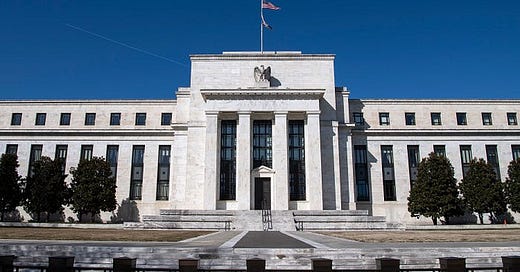US Fed Retains Cautious Approach: Keeps Interest Rates Unchanged
Federal Reserve Interest Rate Decision and Economic Data Analysis.
Federal Reserve Leaves Interest Rates Untouched Analysis
On June 12, 2024, the Federal Reserve made a significant announcement regarding its benchmark interest rate—keeping these unchanged—and provided insights into its view of the current economic landscape. This piece explores the Fed's decision, related economic data, and market reactions, offering a comprehensive analysis of the situation and the likely path ahead.
Inflation Data
The Consumer Price Index (CPI) for May indicated a year-over-year increase of 3.3%, slightly lower than the 3.4% recorded in April and below economists' expectations of 3.4%. On a month-over-month basis, inflation remained flat, marking the first month without an increase since July 2022. This data, received shortly before the Fed's announcement, suggests a slight cooling in inflationary pressures.
Jobs Data
The U.S. economy added 272,000 jobs in May, significantly exceeding expectations and highlighting the resilience of the labor market. However, the unemployment rate rose to 4%, the highest level since January 2022. This mixed data reflects strong job growth alongside a rising unemployment rate, presenting a complex picture of the labor market.
Federal Reserve Interest Rate Decision
The Federal Reserve accordingly decided to maintain its benchmark interest rate at the current range of 5.25% to 5.5%, marking the seventh consecutive meeting where rates have remained unchanged. This decision reflects a cautious approach amid mixed economic signals. Notably, the Fed revised its outlook, now projecting only one rate cut in 2024, a significant change from the three cuts anticipated in March.
Fed Commentary
In the post-meeting statement, the Federal Reserve acknowledged that while inflation has eased, it still remains above the 2% target. The Fed noted "modest further progress" toward achieving its inflation objective. Fed Chair Jerome Powell emphasized the importance of patience, stating that the central bank needs more consistent data showing inflation moving sustainably toward 2% before considering any rate cuts.
Market Reaction
Following the Fed's decision and the release of inflation data, the markets reacted positively. The S&P 500 and Nasdaq posted record closing highs for the third consecutive day. Meanwhile, the dollar held steady after initially dropping due to cooler-than-expected inflation data. Treasury yields remained elevated, with the 10-year yield hovering around 4.4%, indicating that the as per the market’s expectations, the interest rates may have plateaued.
European Central Bank's Decision
The European Central Bank (ECB) had recently made a significant decision to cut interest rates for the first time since 2019. On June 6, 2024, the ECB lowered its main refinancing rate, marginal lending facility rate, and deposit facility rate by 0.25 percentage points each. This move was prompted by signs of cooling inflation in the eurozone. ECB President Christine Lagarde emphasized that, despite some easing, inflation remains above the 2% target, with domestic price pressures due to elevated wage growth. The ECB revised its inflation projections upward for 2024 and 2025, adopting a data-dependent, meeting-by-meeting approach to future rate changes.
The ECB's decision contrasts with the Federal Reserve's expected stance of maintaining current rates. The ECB's rate cut aims to relieve financial pressure on businesses and consumers, but the central bank remains cautious about inflation, keeping rates restrictive as needed. The move has implications for the eurozone economy and the euro's strength against the dollar.
Interpretation
The Fed's decision to hold rates steady— as against the rate cut by the ECB— and revise down its rate cut projections suggests a cautious approach amid these mixed economic signals. While inflation has shown signs of cooling, it remains above the Fed's 2% target. The strong job market indicates that the economy may still be running too hot.
Chair Jerome Powell's emphasis on waiting for more consistent evidence of inflation moving sustainably toward the target before considering rate cuts underscores the Fed's careful balancing act. The market's positive reaction to the Fed's decision and inflation data indicates investor optimism about the prospects of a soft landing for the economy.
Conclusion
In conclusion, the Federal Reserve's decision to maintain rates and revise its rate cut outlook reflects a balancing act between managing inflation risks and supporting economic growth. The central bank will likely continue to monitor incoming data closely to determine the appropriate timing and pace of future rate adjustments. The mixed signals from inflation and job data underscore the complexity of the current economic environment, making the Fed's cautious approach both prudent and necessary.
If you believe this article would interest someone you know, please feel free to share it anonymously (for us), using any platform that you prefer.






